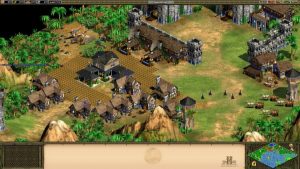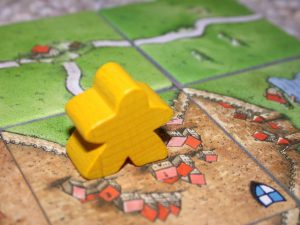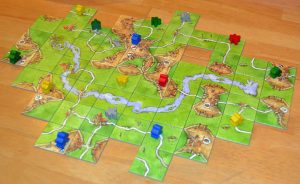What is Geo-Literacy?
Daniel Edelson points out that geo-literacy requires the ability to reason about three things: interactions, interconnections, and implications. Rather than a simple study of maps, charts, and population pyramids, geo-literacy is having a nuanced understanding of how these are all connected. It is also a skill many individuals struggle to develop. According to Edelson, geo-literacy is important in how it prepares individuals to make place-dependent decisions (decisions that hinge on the attributes of places) and far-reaching decisions (containing consequences for people across space and time). To lay the foundation for geo-literacy instruction in our schools, we must teach more earth science, environmental science, ecology, and of course geography. We need to teach how and why we are connected, as well as how and why we make decisions. Geo-literacy is about reasoning and learning to live well in the world.
Two Digital Artefacts which Promote Geo-Literacy in the Classroom

Stop Disasters Game (www.stopdisastersgame.org):
I have always been drawn to video games and board games going as far back as my own childhood. I know from personal experience that, when used correctly, games promote learning and empower inquiry-based thinking in learners of all ages. Much of my own historical knowledge originally came from real-time-strategy games for the computer, such as Age of Empires II: The Age of Kings – a strategy board game that is set in the medieval period. These games (though certainly not all) promote geo-literacy in the ways in which they engage players in the implications of commodity speculation and trade, the diplomatic interactions between player vs. player or player vs. A.I., and the interconnections between human societies across space and time. An example from this from the above-mentioned game would be the player conducting research of a particular technology at a university or other civic building to advance their civilization into the next era, providing them with an economic, cultural, social, political, or military advantage. At its core, this game mechanic is based on our own real world experiences, as human societies are in flux, competing and cooperating with one another on multiple, seemingly three-dimensional levels for power. Another game I remember playing as a child was a digital globe that would quiz me on my geographic knowledge. Geo-literacy skills could be improved upon by interacting with the globe itself. This globe and game was where I took my first steps into the world of a geographer and identified that my world was a microcosm of a much larger and infinitely more complex system of ideas, values, wealth distribution, etc.
What is the (selected) activity?
The Stop Distasters game is one of the two digital artefacts I have selected for this assignment. In the flash game, you assume the role of a city planner and are provided with a set amount of funds and an overview of a local community you are tasked with protecting from a natural disaster, such as a hurricane, tsunami, etc. There are multiple objectives for multiple scenarios with multiple difficulties (variety is good!), but your primary goal remains unchanged: prevent and reduce the destruction of both life and property.
How does this activity encourage geo-literacy?
The game is excellent in how it engages the “three I’s” of geo-literacy: interactions, interconnections, and implications. By managing local infrastructure development, students are practicing making ethical place-dependent decisions, while understanding how natural events (earthquakes, tsunamis, etc.) and climate change affect our world. For me, the crux of this activity is communicating how we are dependent upon our the environments we live in. The game also encourages the consideration of cause and effect, insofar as it promotes far-reaching decision-making. For example, the prevention of disaster in a rural Caribbean community would ensure that national expenditure is saved for investment in other areas, such as developing the economy, improving the living conditions of citizens. So smart planning results in a more (broadly speaking) equitable society.
How does this activity apply to the new curriculum?
The development of necessary emergency facilities and infrastructure, promote BC’s new curriculum by enabling students to identify how individual and group actions influence the natural environment and how to make positive changes. Implicit within this core competency is also the ability for students to identify and distinguish natural disasters and the various risks they pose. The follow up worksheet with this activity promotes best research practices by having students record their experience of the activity and encourages critical reflection, which itself promotes learning. By play-testing the scenarios of the game, students improve their ability to consider alternative strategies in resource management, alternative perspectives (ex. the challenges you face against a South Pacific typhoon vs. a European volcanic eruption), implications, and making ethical decisions based on evidence. This activity has the potential to broaden the discussion to how human environment interactions influence weather and climate change and how these influence how we interact with our environment. Students will leave the activity with a better understanding of infrastructure development and considerations and how nature shapes how we live and see ourselves in the world.
Board Games (Carcassonne):
 I especially enjoyed the class on board games. We live in a world that is becoming increasingly complex in how we gather and interpret information and experience it. Recent developments in technology have resulted in seismic shifts in how we communicate with one another: the Internet, social media, and virtual reality to name a few. With this in mind, I find myself personally seeking technology-free spaces and periods of time in a day where I am “technology free”. One way I have managed to meet both these needs for myself is by playing board games with friends and family. Board games offer, in my opinion, a more authentic, direct social experience and should we not be promoting such experiences as learning professionals? I recently backed on Kickstarter a board game called Sabres and Smoke: The War of 1812, which is a 2 player board game that has students simulating historical battles from the famous war. All people (not just young people!) enjoy games and as learning professionals, we need to unlock the potential of each game and guide learners’ inquiry towards our learning objectives – objectives which ultimately promote geo-literacy. Moving forward professionally, I am excited to introduce board games into my classes, including but not limited to student development of their own board games.
I especially enjoyed the class on board games. We live in a world that is becoming increasingly complex in how we gather and interpret information and experience it. Recent developments in technology have resulted in seismic shifts in how we communicate with one another: the Internet, social media, and virtual reality to name a few. With this in mind, I find myself personally seeking technology-free spaces and periods of time in a day where I am “technology free”. One way I have managed to meet both these needs for myself is by playing board games with friends and family. Board games offer, in my opinion, a more authentic, direct social experience and should we not be promoting such experiences as learning professionals? I recently backed on Kickstarter a board game called Sabres and Smoke: The War of 1812, which is a 2 player board game that has students simulating historical battles from the famous war. All people (not just young people!) enjoy games and as learning professionals, we need to unlock the potential of each game and guide learners’ inquiry towards our learning objectives – objectives which ultimately promote geo-literacy. Moving forward professionally, I am excited to introduce board games into my classes, including but not limited to student development of their own board games.
What is the (selected) activity?
My group played the board game Carcassonne – a tile-based strategy game in which players find themselves occupying a medieval landscape that is gradually revealed with each player’s turn. Player’s score points by occupying territory with their “meeps” or people. Each player only has 7 meeps they can use to claim territory. When cities, roads, farmlands, and monasteries are completed, player’s meeps are returned to them and they score points depending on how much the claimed territory was developed. This is intended to reflect how human-environment interactions shape our world and how societies attribute value to ideas (fortified settlements), beliefs (monasteries), infrastructure (roads and rivers), and land (farmland). Board games also have the added benefit of the “social contract”, meaning students engage in constructive cooperation in order to play through a game. Learners need to know how to both work and play responsibly together.
While Carcassonne is fun and applicable to all age groups (though it is particularly geared towards Grade 8 students in a medieval unit), it has a steep learning curve. Once students stumble through the first game and get a feel for it, they can base their reflections on their second play-through of the game. I should also note that these reflections need not be writing-based in the traditional sense. Students might appreciate a variety of options in how they choose to communicate the development of their geo-literacy skills: diagrams, mind maps, pod casts, oral presentations, etc.
How does this activity encourage geo-literacy?
This game is excellent because it challenges students to ask why things are where they are and what are the significant relationships between tiles. In terms of interactions, interconnections, and implications, students are constantly seeking to acquire more points than the other players, requiring a more nuanced understanding of the relationship between tiles. This provokes questions regarding the composition of medieval societies and urban vs. rural development. For example, students would weigh the risks of investing all of their meeps into farmland or perhaps a balance between all sources of points. Other students might question the identities of the meeps themselves (i.e. What is the profession of my meep who is claiming the city? What might we call this person today?). The game is boundless in its level of entertainment, content, and connections to the new curriculum, but would require thoughtful scaffolding when introducing it to younger learners. There is also, of course, the added challenge of acquiring the funds from a school district or Parent Advisory Council to purchase enough board games for an entire class!

How does this activity apply to the new curriculum?
All strategy/board games have the same benefits of promoting each of the core competencies, though effort and scaffolding on the part of the teacher is necessary to incorporate the curricular competencies within the new Social Studies curriculum. For example, before engaging students with a board game activity, the teacher should introduce the 5 themes of geography, as well as provide the class with a working definition of geo-literacy (provided above) that students can draw on to guide their learning. Furthermore, the debrief activity might involve students sharing their experiences in a circle sharing activity whereby the teacher guides student reflections through one of the six historical thinking concepts (ex. perspective taking). That said, Carcassonne promotes active, direct, and explicit communication between students. It also promotes critical thinking in how students uncover new ways to score more points, and personal and social competencies in the ways it gets students thinking about how environment is shaped people and how people are shaped by their environment.
